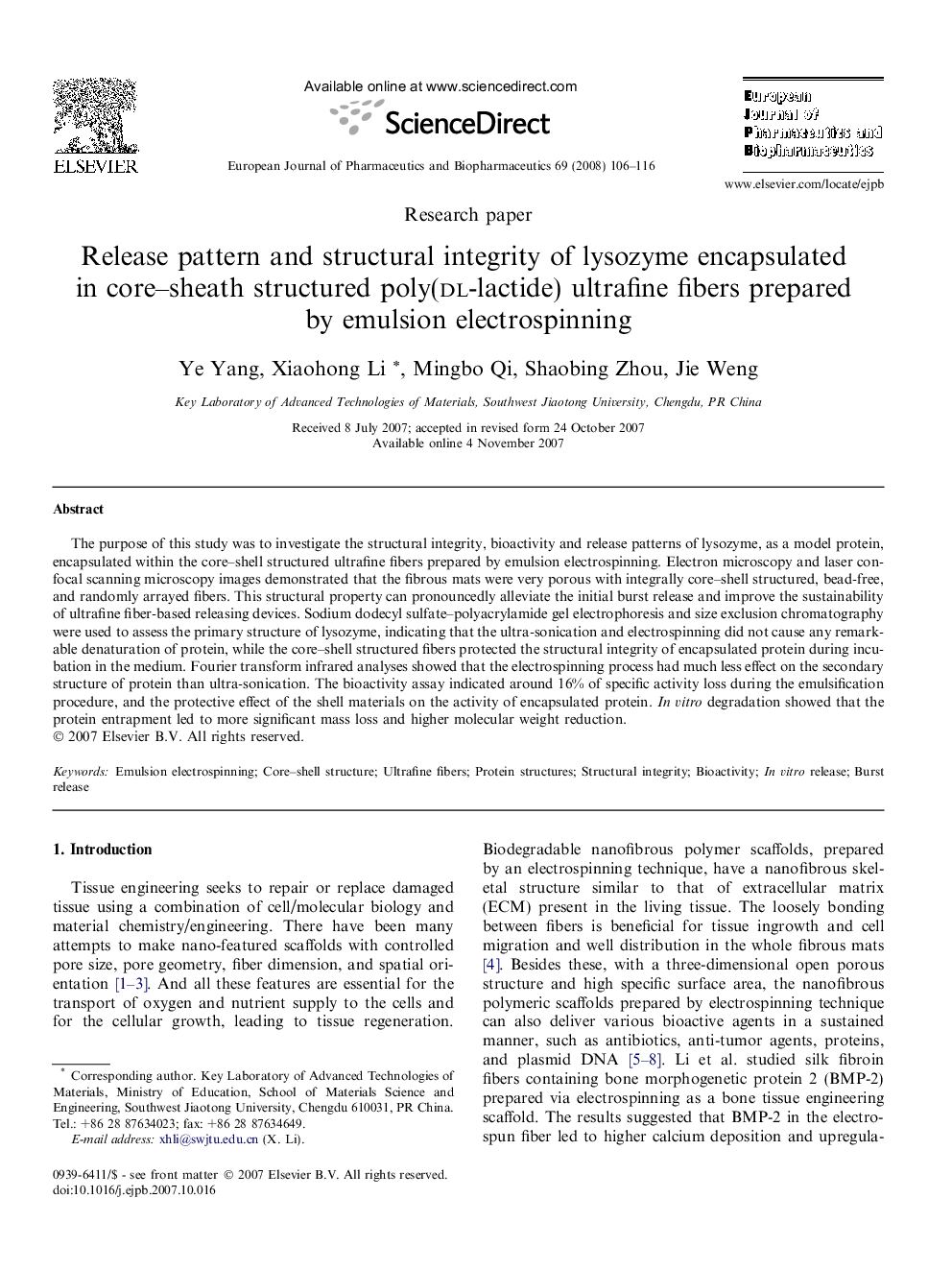| Article ID | Journal | Published Year | Pages | File Type |
|---|---|---|---|---|
| 2084777 | European Journal of Pharmaceutics and Biopharmaceutics | 2008 | 11 Pages |
The purpose of this study was to investigate the structural integrity, bioactivity and release patterns of lysozyme, as a model protein, encapsulated within the core–shell structured ultrafine fibers prepared by emulsion electrospinning. Electron microscopy and laser confocal scanning microscopy images demonstrated that the fibrous mats were very porous with integrally core–shell structured, bead-free, and randomly arrayed fibers. This structural property can pronouncedly alleviate the initial burst release and improve the sustainability of ultrafine fiber-based releasing devices. Sodium dodecyl sulfate–polyacrylamide gel electrophoresis and size exclusion chromatography were used to assess the primary structure of lysozyme, indicating that the ultra-sonication and electrospinning did not cause any remarkable denaturation of protein, while the core–shell structured fibers protected the structural integrity of encapsulated protein during incubation in the medium. Fourier transform infrared analyses showed that the electrospinning process had much less effect on the secondary structure of protein than ultra-sonication. The bioactivity assay indicated around 16% of specific activity loss during the emulsification procedure, and the protective effect of the shell materials on the activity of encapsulated protein. In vitro degradation showed that the protein entrapment led to more significant mass loss and higher molecular weight reduction.
